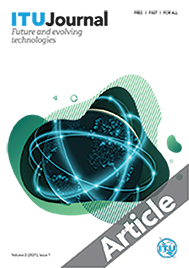|
Economic efficiency of spectrum allocation
|
Authors: Vadim Nozdrin
Status: Final
Date of publication: 15 March 2021
Published in: ITU Journal on Future and Evolving Technologies, Volume 2 (2021), Issue 1, Pages 67-76
Article DOI : https://doi.org/10.52953/MWLM5949
|
 | Abstract:
Spectrum demand is rapidly expanding, driven by the developments of incumbent radio systems, as well as with the requirements of new technologies and market players to get spectrum access. In this regard, one of the fundamental functions of the state spectrum regulator is to create an enabling administrative and legal environment to ensure efficient spectrum use and to mitigate scarcity of this valuable natural resource. This paper analyses the economic value of spectrum use and suggests an extension of the spectrum's traditional technical boundaries, in order to take into consideration energy, environmental, sanitary and bio-geotechnical limits. The study reviews the phenomena of increasing transaction costs and negative externalities of spectrum access requiring economic criteria and assessment to achieve optimum resource allocation with a spectrum's demand growth. Results develop an input-output matrix as an allocation instrument to achieve spectrum efficiency and optimum equilibrium based on analysis of the economic effects from different band utilization scenarios, supplemented by currently used technical criteria. Practical application of proposed economic methods should improve the existing spectrum management system.
|
|
Keywords: Input-output matrix, spectrum efficiency, spectrum externalities, spectrum management
Rights: © International Telecommunication Union, available under the CC BY-NC-ND 3.0 IGO license.
|
|
| ITEM DETAIL | ARTICLE | PRICE | |
|---|
ENGLISH  Full article (PDF)
Full article (PDF) |
|
| 0
| Free of charge | DOWNLOAD |
|
|
| |